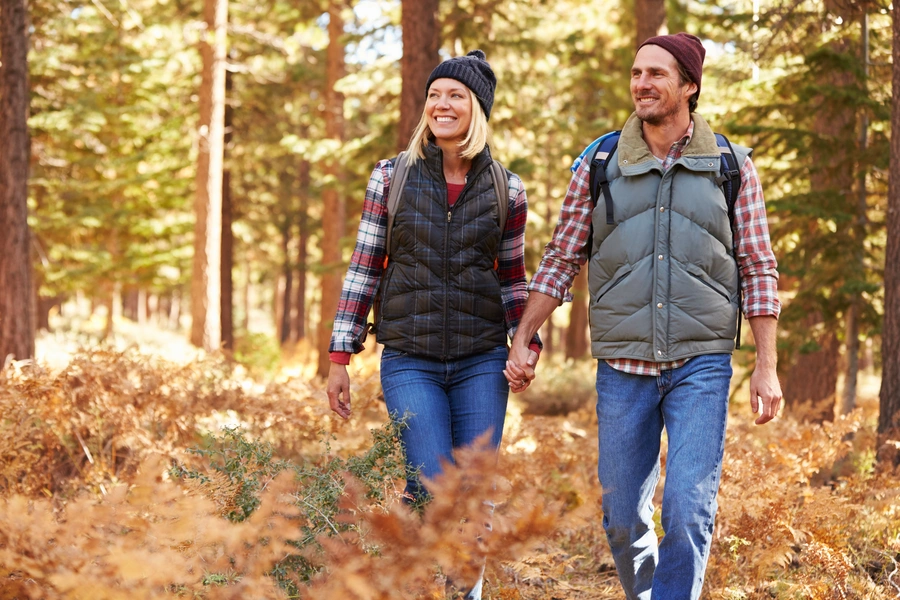An outdoor wardrobe is only complete with a trusty gilet or body warmer. These sleeveless layers offer a lightweight yet practical solution to changing weather, ideal for hiking, gardening, or simply staying warm on chilly days. While gilets and body warmers share many similarities, subtle differences set each apart. Knowing these distinctions can help you choose the right one for your needs.
Practicality and Purpose
Both gilets and body warmers offer core insulation while allowing freedom of movement in the arms, but each serves a slightly different purpose. A body warmer is usually designed with practicality and warmth in mind. It’s often crafted from thicker, quilted materials to keep you warm in low temperatures, making it an excellent option for colder days or layering under a waterproof jacket.
A gilet, on the other hand, is more versatile and commonly features a slimmer design. While it offers warmth, it’s usually lighter and more tailored than a body warmer, fitting neatly over shirts or jumpers without adding too much bulk. Gilets are popular in outdoor activities that require a bit of warmth without the weight, like brisk walks or layering in milder seasons.
Style Differences
When it comes to style, gilets tend to be more fashion-forward. They often have a sleeker silhouette and come in various fabrics and cuts. You’ll find gilets in materials like fleece, wool, or even leather, allowing for a more refined look suitable for casual or smart-casual wear. Body warmers, by contrast, are typically thicker and focus more on function than fashion. They’re commonly made from padded or insulated materials that prioritise warmth, making them appear slightly bulkier than gilets.
Because of its tailored fit, a gilet is easy to pair with a range of outfits, whether dressing up for a day out or keeping it casual. Meanwhile, with its thicker and more functional build, a body warmer is best suited for practical outdoor use where warmth is a priority over style.
Range of Movement
One of the main benefits of both a gilet and a body warmer is their freedom of movement. Since neither has sleeves, you can layer them over other clothing without feeling restricted. It is ideal for tasks that require arm flexibility, such as cycling, gardening, or even working in colder conditions.
However, due to its lightweight design, a gilet is often less bulky and offers slightly more ease of movement than a typical body warmer. This makes it a preferred choice for active pursuits where you want an added layer without compromising mobility. With their added thickness, body warmers may feel heavier but provide extra insulation, making them ideal for situations where warmth outweighs the need for flexibility.
Warmth and Insulation
Both options offer warmth, but body warmers generally provide more insulation. Designed to retain body heat, body warmers typically have thicker, padded layers that trap warmth, which is ideal for colder days. Gilets are lighter in their insulation and are often worn for added warmth in milder weather or as a light layer under a jacket.
Some body warmers are designed with advanced insulation materials like down or synthetic fillers, which give them a higher warmth-to-weight ratio. Gilets, particularly those made from fleece or wool, also offer warmth but are better suited for autumn days or layering under a thicker coat when the temperature drops.
Choosing the Right One for You
Choosing between a gilet and a body warmer depends on your lifestyle, purpose, and style preference. If you’re looking for a versatile piece that you can wear in various settings and seasons, a gilet might be your best bet. With its tailored fit and lighter weight, it works well as a stylish layering option.
However, if warmth is your top priority, especially for outdoor activities in cold weather, a body warmer is likely the more practical choice. Its thicker build will keep you insulated, even in chilly temperatures, making it a staple for colder months.
Gilets and body warmers make excellent additions to any wardrobe, each offering unique benefits. By understanding their differences, you can make a more informed choice suited to your needs and outdoor adventures.

